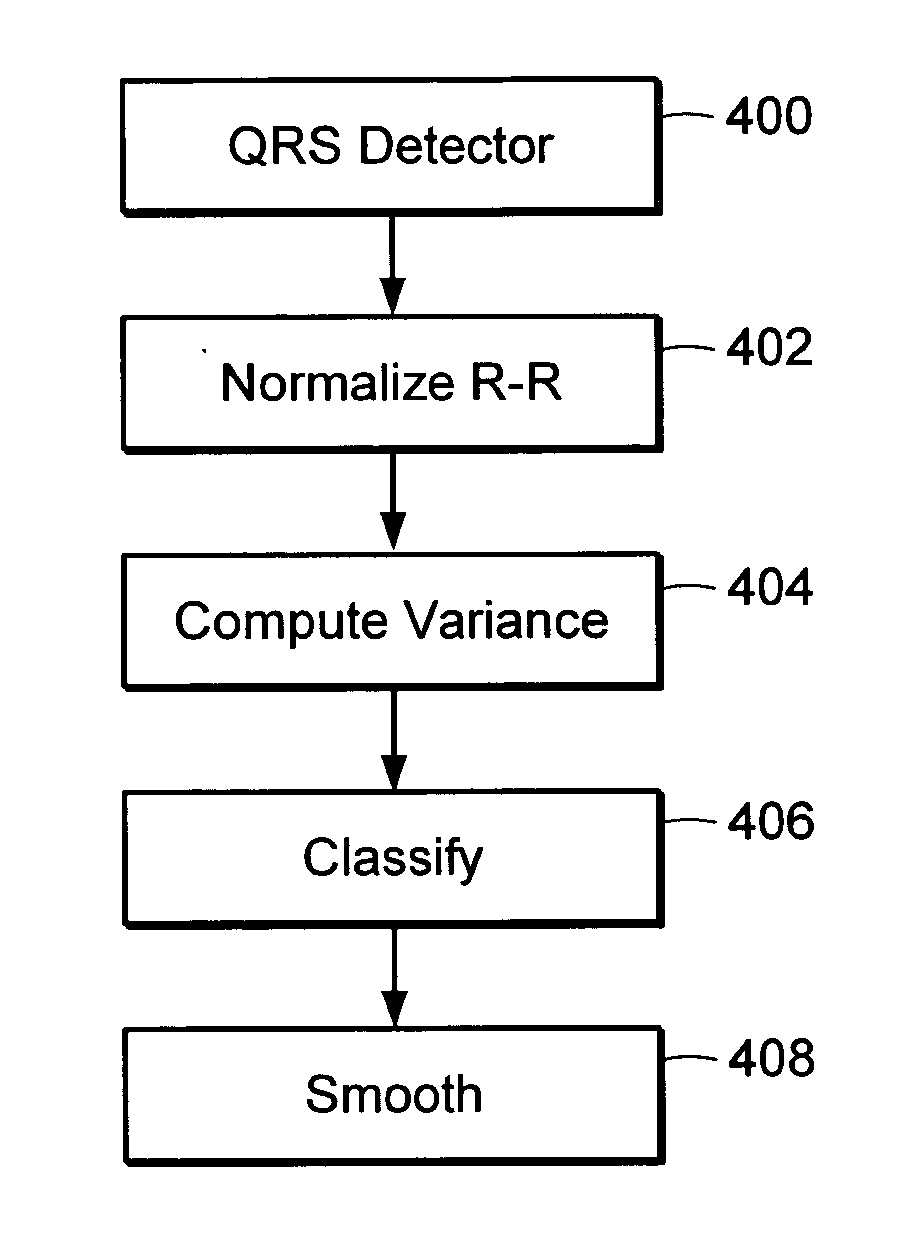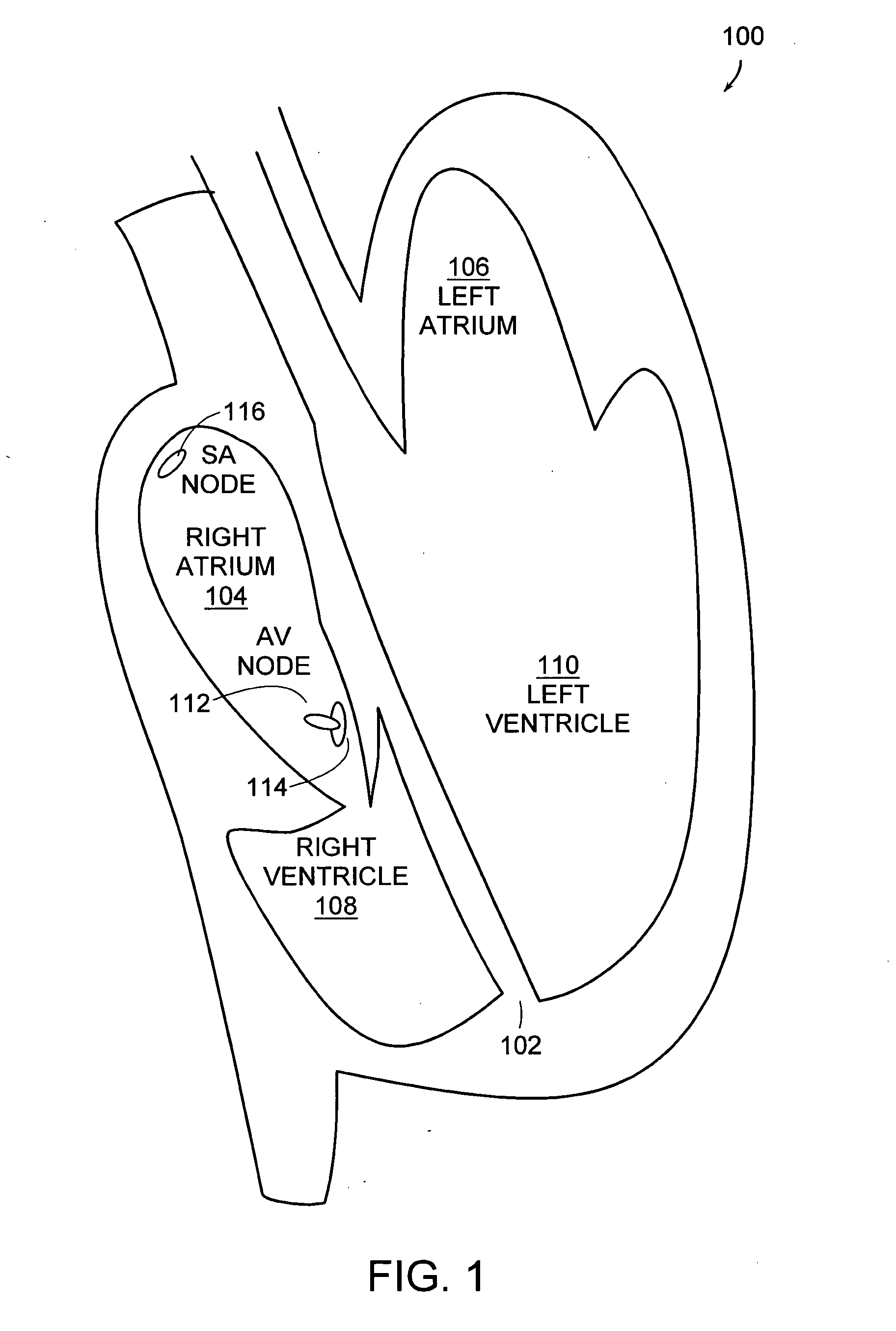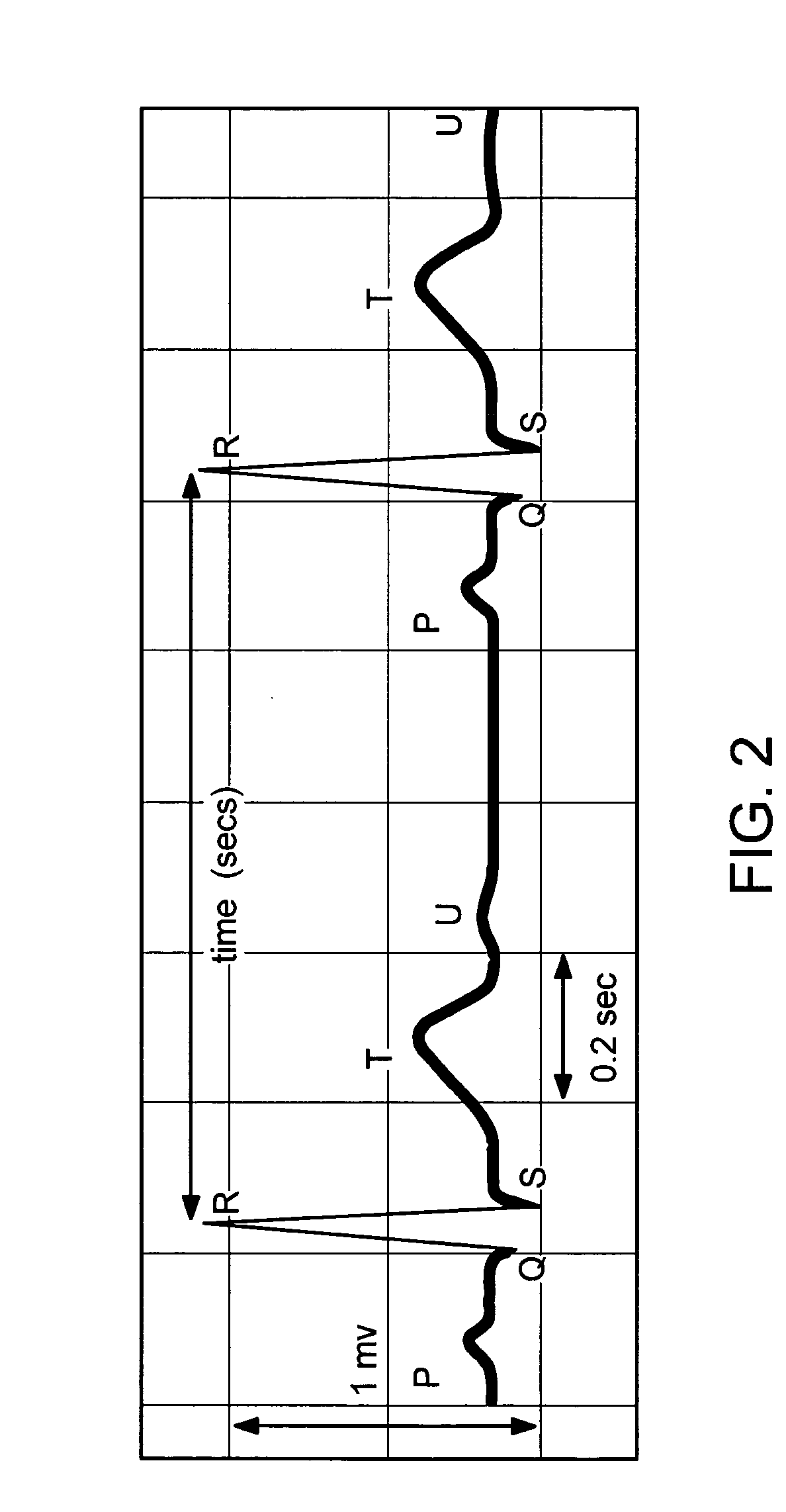Atrial fibrillation detection method and apparatus
a technology of atrial fibrillation and detection method, applied in the field of atrial fibrillation detection method and apparatus, can solve the problems of increased risk of stroke, heart failure, blood clots forming in the atria,
- Summary
- Abstract
- Description
- Claims
- Application Information
AI Technical Summary
Benefits of technology
Problems solved by technology
Method used
Image
Examples
Embodiment Construction
[0032] A description of preferred embodiments of the invention follows.
[0033] Most ECG recordings contain two or more simultaneously recorded ECG signals, called “leads.” The heart generates an electrical field that varies spatially as well as temporally. Thus, the standard practice is to record two or more signals (leads) derived using sensing electrodes placed at certain specific locations. The wires that connect the electrodes to the recording equipment are also sometimes referred to as “leads”.
[0034] As is well-known in the art, there is a standard placement for ECG leads that requires an individual with special training to perform the placement. Typically, a nurse performs the placement, a doctor performs the testing, an ECG technician runs the analysis software and a cardiologist performs the over-read. Non-ambulatory electrocardiograph devices include precordial leads and limb leads. Precordial leads are placed on the chest wall at pre-defined positions on the chest wall re...
PUM
 Login to View More
Login to View More Abstract
Description
Claims
Application Information
 Login to View More
Login to View More - R&D
- Intellectual Property
- Life Sciences
- Materials
- Tech Scout
- Unparalleled Data Quality
- Higher Quality Content
- 60% Fewer Hallucinations
Browse by: Latest US Patents, China's latest patents, Technical Efficacy Thesaurus, Application Domain, Technology Topic, Popular Technical Reports.
© 2025 PatSnap. All rights reserved.Legal|Privacy policy|Modern Slavery Act Transparency Statement|Sitemap|About US| Contact US: help@patsnap.com



